Author: Zhu Yulong
Recently, Yanyan and I have been working on a series of in-depth monthly reports (scheduled for release in November, summarizing information from October), covering the following four areas:
- Charging Facilities
Focus on the situation of charging facilities in China, as well as the self-built networks of power grids, operators, and car manufacturers.
- Battery Swapping Facilities
Focus on the new wave of battery swapping facilities in China, including NIO, SAIC, and CATL.
- Global Trends
Focus on the changes in global charging facilities, mainly including the cooperation between automotive companies and energy vehicles in the United States, Europe, and Southeast Asia, as well as regulatory and standard trends.
- Industry Trends
As the industry enters the phase of elimination, focus on the cooperation and merger analysis of companies within the industry, as well as deeper information such as technological changes and costs.
The first part is published here. If you are interested in the entire report, please contact Yanyan (WeChat: eyeetao).
As of October 2022, there were 1.68 million public charging piles, including 710,000 DC charging piles and 970,000 AC charging piles, in China. From the perspective of overall construction direction, as of October 2022, China’s public charging facilities have added 240,000 DC piles and 970,000 AC piles.
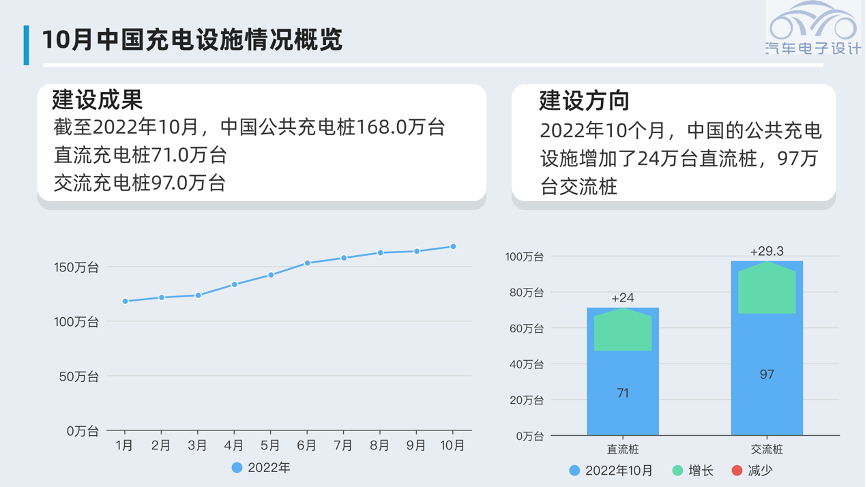
Overview of China’s Charging Facilities in November
To achieve a good user experience of new energy vehicles, public charging facilities are essential. Currently, China’s charging facilities resonate with the purchase of electric vehicles by consumers, and both local governments and operators are deploying them to areas with a high concentration of electric vehicles. Therefore, if we compare the penetration rate of new energy vehicles with the ownership rate of charging piles, they are basically coincident.
Current Top 10 Regions: Guangdong, Jiangsu, Shanghai, Zhejiang, Beijing, Hubei, Shandong, Anhui, Henan, and Fujian. These regions have built 1.2 million public charging piles, accounting for 71.5% of the total number of public charging piles in the country.

The Rapid Increase of China’s New Energy Vehicle Ownership and Charging Facilities
The ownership of new energy vehicles in China has risen rapidly to about 12 million, with a total of 4.708 million charging facilities. The ratio of charging pile to vehicle is currently about 2.5, which is an improvement from a historical perspective. However, we can see that this wave of growth is still driven by private charging piles growing at a much faster rate than public charging piles.
If we consider public charging piles alone, there are only 1.68 million available. If we further subdivide by the utilization rate of DC (direct current) piles, there are only 0.71 million available, which is the largest in the world but still insufficient compared to the total number of new energy vehicles.
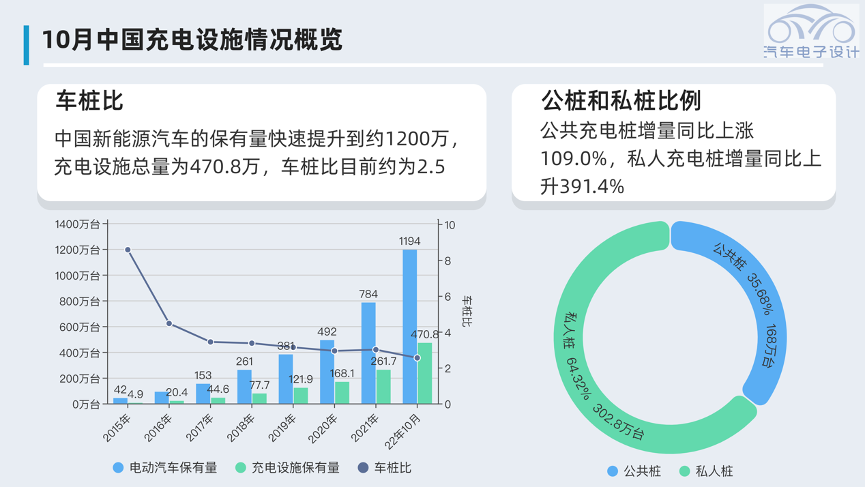
Due to the concentration of new energy vehicle ownership, charging in the whole country is mainly concentrated in provinces such as Guangdong, Jiangsu, Sichuan, Zhejiang, Fujian, and Shanghai. Public charging is mainly focused on the charging of buses, passenger cars, environmental sanitation logistics vehicles, and taxis. In October, the total national charging electricity consumption was about 2.06 billion kilowatt-hours, a decrease of 130 million kilowatt-hours from September. Electricity consumption also reflects the strength of each province’s economy.
In my opinion, the construction of charging piles has also been affected recently, and the entire system is a linkage effect between the vehicle and the charging pile.

Operators and automakers
Regardless of how many piles the operator reports, if it is directly related to the charging volume, this data is very valuable. The number of charging piles and charging volume of Chinese charging operators can reflect the overall data situation. The monthly output of charging amount from Xiaojuchongdian’s charging piles is very high.
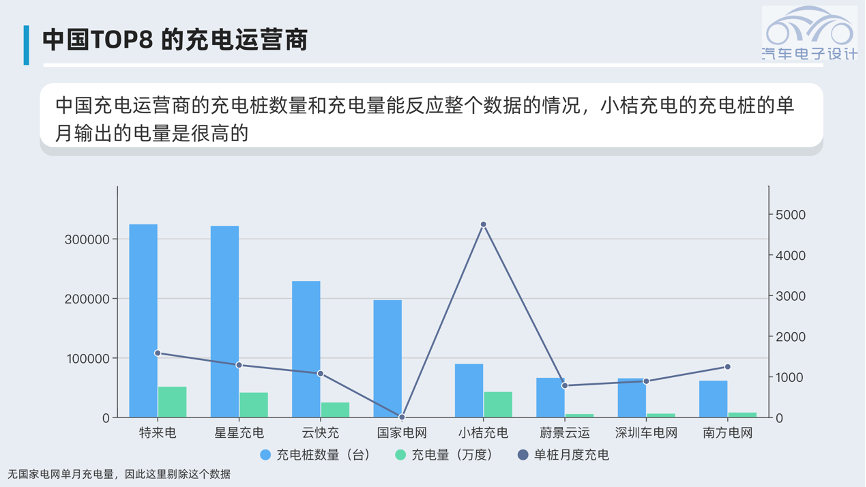
If we exclude the AC (alternating current) piles, it can better reflect the operating situation of each charging operator. Considering waiting times and parking situations, we need to focus more on the comparison of DC piles in the future, which has direct significance for ordinary users.
From the perspective of the layout of various enterprises, simply connecting to the charging piles of operators cannot achieve very good results. Currently, the charging facilities of auto companies mainly include Tesla, NIO, Volkswagen, and XPeng Motors. They are mainly developing fast charging facilities. Tesla still occupies a relatively good position, but the gap is narrowing.

Tesla has advantages in China, but it is currently shrinking. Even if it establishes its own supercharging assembly plant, the eventual location will still be limited by grid capacity. Currently, Tesla has built more than 1,300 supercharging stations, more than 9,500 supercharging piles, over 700 destination charging stations, and more than 1,900 destination charging piles on the Chinese mainland. In October, there were 43 new supercharging stations and 174 new supercharging piles.
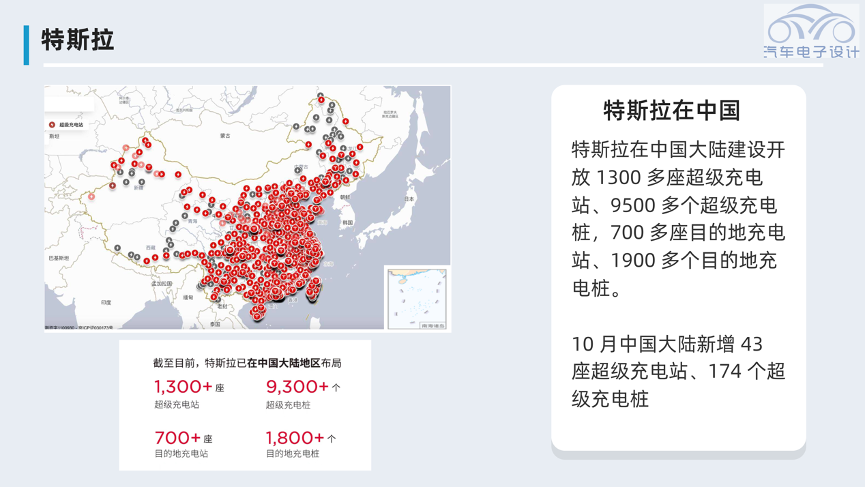
NIO’s charging network is actually a hedge. Supported by battery swap technology, it mainly serves other brands of cars, but the development of second- and third-tier car brands is another direction. From battery swap to compatible fast charging, this layout is very critical.

The challenge for XPeng Motors is to build 800V high-power fast charging stations alone, which is very difficult. As of October 31, 2022, XPeng had put 1,015 self-operated stations online, including 809 supercharging stations and 206 destination charging stations, covering all prefecture-level administrative regions and municipalities directly under the central government. The layout plan of S4 super fast charging stations is expected to complete its first batch of 7 S4 super fast charging locations simultaneously in 5 cities including Beijing, Shanghai, Shenzhen, Guangzhou, and Wuhan by the end of 2022.“`markdown
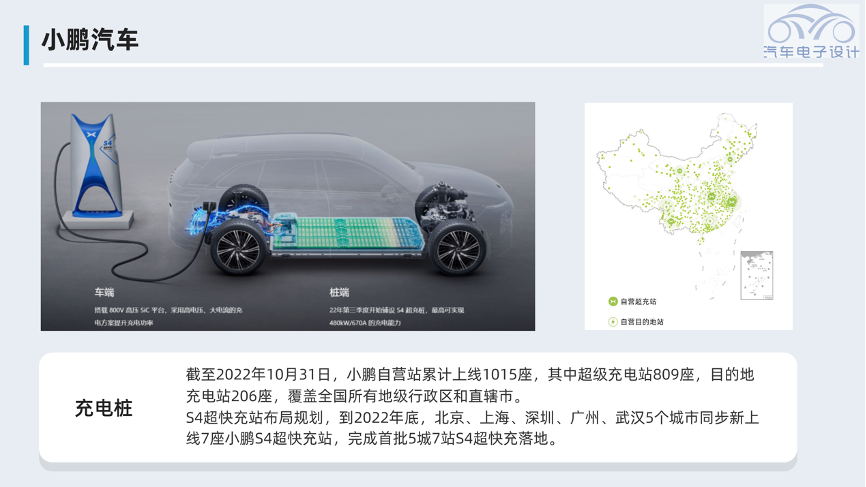
K-Mate has already established 953 supercharging stations with 8466 charging terminals in 140 cities nationwide, covering the eight major cities such as Beijing and Chengdu, achieving the charging convenience within a 5-kilometer range of the main urban areas.

Summary: We will update the information regularly to present the dynamics of the entire charging industry in a visual mode. The publicly shared part of the report will be posted on our official WeChat account. If you are interested in the remaining part, please contact YY (WX: eyeetao).
“`
This article is a translation by ChatGPT of a Chinese report from 42HOW. If you have any questions about it, please email bd@42how.com.
